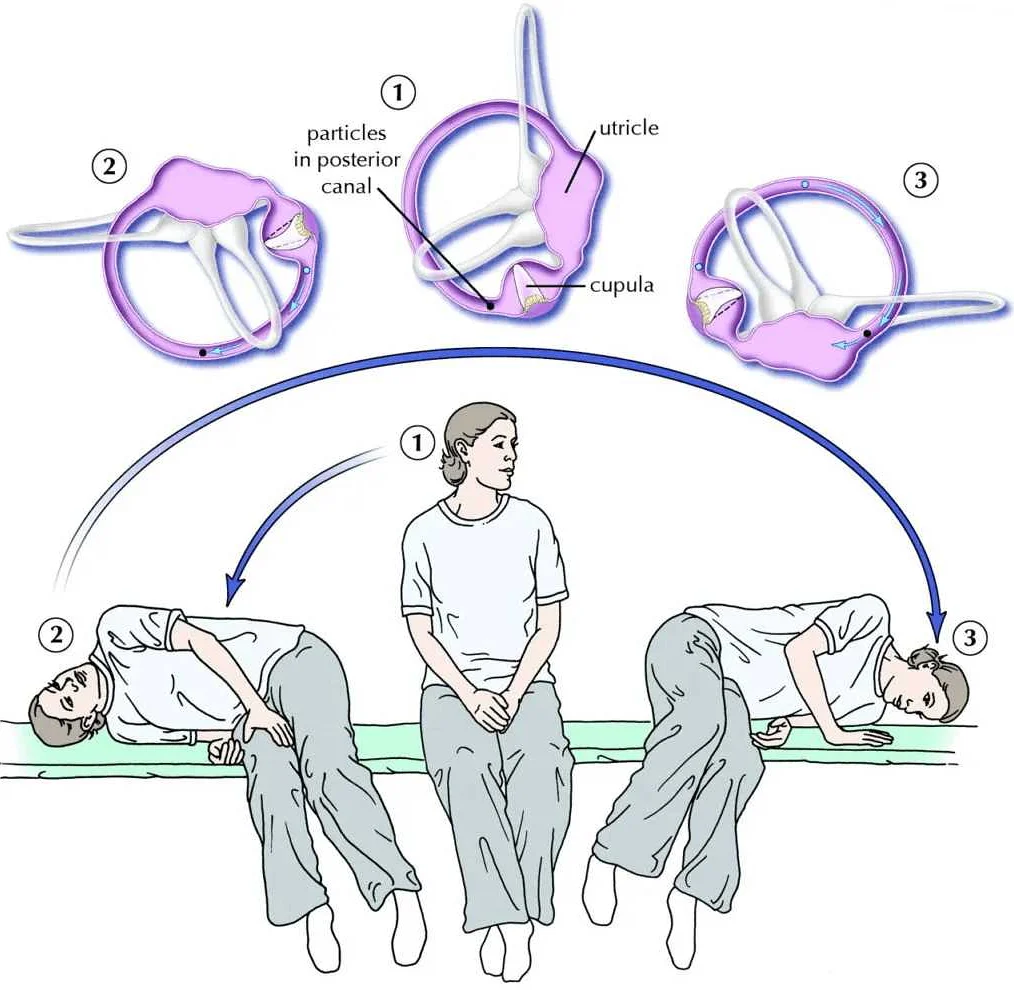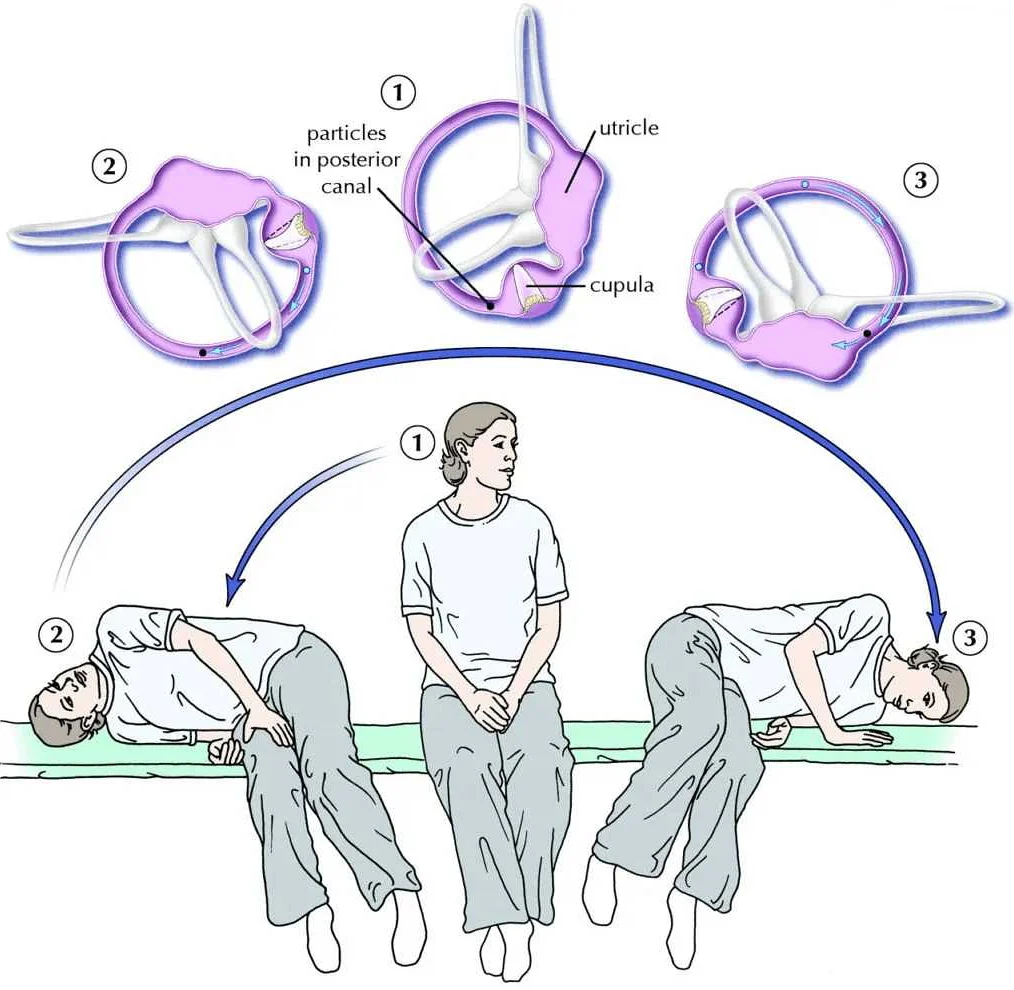Benign paroxysmal positional vertigo: Causes, symptoms, and treatments
Learn about the causes, symptoms, and treatment options for benign paroxysmal positional vertigo, a common vestibular disorder that causes episodes of dizziness and imbalance. Find out how to manage and prevent future episodes of BPPV for improved quality of life.
Benign Paroxysmal Positional Vertigo (BPPV) is a common inner ear disorder that causes brief episodes of intense dizziness or vertigo. It is characterized by a sudden sensation of spinning or whirling when changing the position of the head. BPPV is a benign condition, meaning it is not life-threatening, but it can have a significant impact on a person’s quality of life.
Symptoms of BPPV include dizziness, lightheadedness, imbalance, and a spinning sensation. These symptoms can be triggered by specific head movements, such as rolling over in bed, looking up, or bending over. The episodes of dizziness are usually short-lived, lasting only a few seconds to a minute, but they can be quite distressing.
The most common cause of BPPV is the displacement of tiny calcium carbonate crystals, called otoconia, within the inner ear. These crystals are normally found in the utricle, one of the fluid-filled sacs in the inner ear that help us maintain balance. However, in people with BPPV, these crystals become dislodged and migrate into one of the semicircular canals, which are responsible for detecting rotational movement. When the head is moved, the displaced crystals move within the semicircular canals and send incorrect signals to the brain, causing the sensation of dizziness.
Treatment for BPPV typically involves a series of simple head and body movements, known as canalith repositioning procedures. These maneuvers are designed to guide the displaced crystals back into the utricle, where they belong. The most commonly used canalith repositioning procedure is the Epley maneuver, which involves a sequence of head movements performed by a healthcare professional. Other maneuvers, such as the Semont maneuver and the Brandt-Daroff exercises, can also be effective in treating BPPV.
In addition to these maneuvers, medications may be prescribed to alleviate the symptoms of BPPV, such as anti-nausea drugs or medications that suppress the vestibular system. However, these medications are usually only used in severe cases or when other treatments have been ineffective.
If you experience recurring episodes of dizziness or vertigo, it is important to seek medical attention to determine the underlying cause. BPPV can often be diagnosed through a careful history and physical examination, and additional tests, such as a Dix-Hallpike maneuver or an MRI, may be ordered to rule out other conditions. With appropriate treatment, the symptoms of BPPV can be effectively managed, allowing individuals to regain their sense of balance and improve their quality of life.
Overview of Benign Paroxysmal Positional Vertigo

Benign Paroxysmal Positional Vertigo (BPPV) is a common condition that affects the inner ear and causes episodes of vertigo. Vertigo is a sensation of spinning or dizziness that can be triggered by certain head movements.
BPPV is caused by the displacement of small calcium crystals, called canaliths, in the inner ear. These canaliths normally help us maintain our balance, but when they become dislodged and end up in the wrong part of the inner ear, they can disrupt the normal fluid movement and send false signals to the brain.
The exact cause of BPPV is often unknown, but it can be associated with certain factors such as head trauma, ear surgery, viral infections, and aging. It is more common in older adults, but it can affect people of all ages.
Symptoms of BPPV typically include brief episodes of vertigo that are triggered by specific head positions or movements. These episodes can last from a few seconds to a few minutes and may be accompanied by other symptoms such as nausea, vomiting, and unsteadiness.
Diagnosing BPPV usually involves a physical examination and a series of tests, including the Dix-Hallpike test and the Roll test. These tests help determine the specific type and location of the canalith displacement.
Treatment for BPPV often involves a series of head movements, known as canalith repositioning procedures, which aim to move the displaced canaliths back to their original position. These procedures can be performed by a healthcare professional or taught to the patient to perform at home.
In some cases, medication may be prescribed to help manage the symptoms of BPPV, especially if the vertigo episodes are severe or frequent. Medications such as antihistamines or antiemetics can help alleviate the dizziness and nausea associated with BPPV.
Overall, BPPV is a manageable condition, and most people experience significant improvement or complete resolution of symptoms with appropriate treatment. However, it is important to seek medical attention if you experience persistent or worsening vertigo, as it could be a sign of a more serious underlying condition.
| Episodes of vertigo triggered by head movements | Displacement of canaliths in the inner ear | Canalith repositioning procedures, medication |
| Nausea, vomiting, unsteadiness | Head trauma, ear surgery, viral infections, aging |
Common Symptoms of Benign Paroxysmal Positional Vertigo

Benign Paroxysmal Positional Vertigo (BPPV) is a common vestibular disorder that affects the inner ear and causes dizziness and vertigo. The symptoms of BPPV can vary from person to person, but there are some common signs to look out for.
One of the most common symptoms of BPPV is vertigo, which is a spinning sensation that can be quite intense. This vertigo is typically triggered by specific head movements, such as rolling over in bed or looking up. The spinning sensation usually lasts for less than a minute and can be accompanied by nausea and unsteadiness.
Another common symptom of BPPV is nystagmus, which is an abnormal eye movement. During an episode of vertigo, the eyes may move rapidly back and forth or up and down. Nystagmus is often seen in BPPV and can help doctors diagnose the condition.
Some people with BPPV may also experience a sense of imbalance or unsteadiness, even when they are not experiencing vertigo. This feeling of being off balance can make it difficult to walk or perform everyday tasks.
In addition to vertigo, nystagmus, and imbalance, BPPV can also cause other symptoms such as lightheadedness, blurred vision, and anxiety. These symptoms may come and go and can be triggered by certain head positions or movements.
If you experience any of these symptoms, it is important to see a healthcare provider for a proper diagnosis. While BPPV can be bothersome, it is generally treatable with exercises and maneuvers that help dislodge the calcium crystals in the inner ear causing the vertigo.
In conclusion, the common symptoms of Benign Paroxysmal Positional Vertigo include vertigo, nystagmus, imbalance, lightheadedness, blurred vision, and anxiety. It is important to seek medical attention if you experience any of these symptoms to receive an accurate diagnosis and appropriate treatment.
Possible Causes of Benign Paroxysmal Positional Vertigo
Benign Paroxysmal Positional Vertigo (BPPV) is a common inner ear disorder that causes brief episodes of dizziness when the head is moved in certain positions. While the exact cause of BPPV is often unknown, there are several possible factors that can contribute to its development.
One possible cause of BPPV is the displacement of calcium carbonate crystals, known as otoliths, within the inner ear. These otoliths are normally located in the utricle, a small organ that plays a role in maintaining balance. However, if the otoliths become dislodged and migrate into one of the semicircular canals, they can disrupt the normal fluid movement and cause BPPV symptoms.
Another potential cause of BPPV is head trauma. Injuries to the head, such as a concussion or whiplash, can damage the inner ear structures and lead to the development of BPPV. This can occur due to the displacement of otoliths or the disruption of the delicate balance mechanisms within the inner ear.
Certain medical conditions can also increase the risk of developing BPPV. These conditions include inner ear infections, Meniere’s disease, and vestibular neuritis. These conditions can damage the inner ear and disrupt its normal function, increasing the likelihood of developing BPPV.
In addition, advancing age is a common risk factor for BPPV. As we age, the inner ear structures may become less resilient and more susceptible to damage. This can increase the chances of otolith displacement and the development of BPPV symptoms.
Overall, while the exact causes of BPPV may vary, it is important to recognize the possible risk factors and take steps to prevent and manage the condition. If you experience symptoms of BPPV, it is recommended to consult with a healthcare professional for an accurate diagnosis and appropriate treatment.
Diagnosis and Evaluation of Benign Paroxysmal Positional Vertigo

Diagnosis: Benign Paroxysmal Positional Vertigo (BPPV) is diagnosed by conducting a thorough evaluation of the patient’s symptoms and medical history. The evaluation typically includes a physical examination and specific tests to assess the patient’s balance and vestibular function.
Medical History: The medical history is essential in diagnosing BPPV. The healthcare provider will ask the patient about their symptoms, including the duration, frequency, and intensity of vertigo episodes. They may also inquire about any recent head trauma or ear infections that could have contributed to the development of BPPV.
Physical Examination: During the physical examination, the healthcare provider will assess the patient’s balance and perform specific maneuvers to reproduce symptoms of vertigo. They may also check for other signs of vestibular dysfunction, such as nystagmus (involuntary eye movements) or abnormal reflexes.
Dix-Hallpike Test: The Dix-Hallpike test is a common diagnostic test for BPPV. During this test, the patient sits on an examination table with their legs extended. The healthcare provider then quickly moves the patient’s head into specific positions while observing for characteristic nystagmus. The presence of nystagmus, along with the reproduction of vertigo symptoms, can help confirm a diagnosis of BPPV.
Epley Maneuver: The Epley maneuver is a therapeutic maneuver used to treat BPPV. However, it can also be used as a diagnostic tool. This maneuver involves a series of head and body movements designed to reposition displaced otoliths (calcium crystals) within the inner ear. If the maneuver relieves the patient’s symptoms, it can confirm the diagnosis of BPPV.
Additional Tests: In some cases, additional tests may be necessary to evaluate the patient’s vestibular function further. These tests can include videonystagmography (VNG), which tracks eye movements, and posturography, which assesses the patient’s balance control.
Evaluation: Once diagnosed, it is crucial to evaluate the severity and impact of BPPV on the patient’s daily life. This can be done through questionnaires or discussions with the patient about the frequency and impact of vertigo episodes on their quality of life.
Overall, the diagnosis and evaluation of BPPV involve a comprehensive assessment of the patient’s symptoms, medical history, physical examination, and specific tests. This holistic approach helps healthcare providers confirm a diagnosis of BPPV and tailor appropriate treatment options to alleviate the patient’s vertigo symptoms.